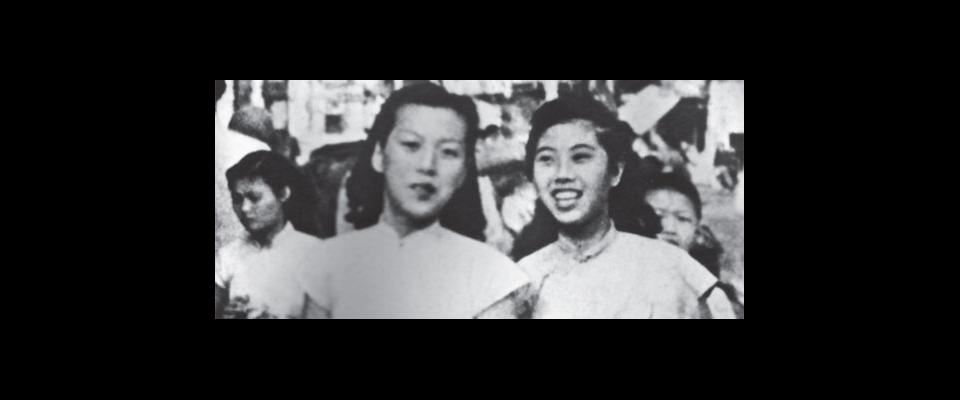Did pre-war Shanghai’s unique brew of hard-headed ambition and romantic idealism create modern China? Plus: Berkeley’s East Asian Library finally has a home of its own.
Dear Editor,
I come from an old-fashioned family. My marriage was arranged for me…. I was fourteen when engaged. I tried to get to know her but had no success [since] she is completely uneducated and very stubborn. I was so completely put off by her that I left home three days after the wedding.
I have been reading about the new-style marriage. It is absolutely beyond my power to remake this woman into a lovable wife [and] I believe it is necessary for my happiness as well as for hers that we get a divorce. Are there legal entanglements? May I fall in love with someone else before I get the divorce?
This letter, written in Shanghai in the years before worldwide depression and war struck in the 1930s, was one of scores that arrived daily in the popular “Readers’ Mailbox” of the newspaper Shenghuo zhoukan, published weekly by the Chinese Society for Vocational Education. The paper’s energetic editor, Zou Taofen, doubled as career and moral advisor—Stephen R. Covey rolled into Ann Landers—for a growing middle class that author Wen-hsin Yeh claims in her recently published book, Shanghai Splendor, blazed the trail for modernity in China.
Professor Yeh herself is one of the scholarly trailblazers overturning the traditional emphases of China studies in the West. Since Mao’s 1949 revolution, according to Yeh, the political right has been obsessed with the question of “who lost China” to the communists, while the left strove to explain the revolution as a response to European and American colonialism and capitalist exploitation. She argues convincingly that the changing lives and shifting ethos of an emerging middle class, like the young letter-writer above, had a more decisive impact on the country’s history.
These new Chinese moderns came of age neither in the provinces nor in Beijing, but in the port city of Shanghai where, for a century after the Opium War (1839–42), increasing trade with the so-called foreign concessions and internal industrialization created fabulous wealth. There, young men and women strove to embody the virtues of hard work and self-improvement they believed would lead to prosperity and happiness.
The family was modernizing, too, and becoming nuclear. As Yeh explained in an interview at Berkeley’s Institute of East Asian Studies, which she directs, “Under the ancient Confucian system, a son’s filial piety to his mother is much more important than his devotion to his wife. In the early 1920s a new generation of radical students argued that conjugal bonds ought to be part of the relationship between men and women.” Romantic love, portrayed in department store advertisements and promoted as a virtue in Zou’s newspaper (which extolled the “sweetness of love” and the “quest for happiness”), trumped traditional family values.
Thus the modern Chinese wife learned “the virtue of refined manners, educated language, smart household management, and sound judgment.” For the first time among women, this led to school and to a greater worldliness. Inevitably, sexual mores were also in flux—and a source of family conflict. “Lately I have grown very close to someone,” a young woman wrote to “Readers’ Mailbox.” “Our love has led to physical intimacy … and I am carrying the fruit of our love!” But she added ominously, “My father threatens to put me to death.”
Family strife between mothers and their newly empowered daughters-in-law was eased by the son’s ability to provide for all. And the sons increasingly viewed prosperity not only as a personal goal and familial obligation, but also as a patriotic duty. On Yeh’s telling, a new class of merchants and clerks, centered in large banks and shining department stores like Wing On and Sincere on the famed Nanjing Road, were not so much exploited by Western capitalism as exploiting the opportunities for Chinese wealth and personal development that it offered. Their increasing emphasis on material advance, she argues, separates Chinese capitalism and communism from older imperial Confucian values far more than from each other—and helps explain China’s unlikely mix of an authoritarian state with hyper-development today.
Tragically, as world depression and world war spread in the 1930s, the entreaties in Zou’s mailbox from the disillusioned young sons of Shanghai turned harder and more desperate. Disgusted by the failure of the Nationalist Party to confront the advancing Japanese, the patriotism of Zou and his readers also toughened. They began looking to the Chinese state, whose officials had long ago become interdependent with China’s wealthy merchants, to replace Shanghai’s floundering capitalists as patriarchs. A few of the young men joined communist cells.
But it was the Chinese peasantry who gave Mao his army and victory. Among the newly educated class in Shanghai, Yeh says, many were later forced to hide their mercantile past or persecuted during the Anti-Rightist campaign and Cultural Revolution. “These were the people who were really intellectually radical. These were the people who changed the workplace culture. But after 1949 they were not necessarily among the survivors,” she says. “And that’s probably the story of all revolutions. The idealists don’t survive.”
—Kerry Tremain
From the November December 2007 New Media issue of California.


















